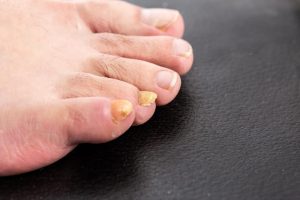Introduction
Thick Toenails, often a result of fungal infections, trauma, or age-related changes, can be both unsightly and uncomfortable. However, restoring and renewing thick toenails is possible with the right strategies and treatments. In this comprehensive guide, we’ll explore effective techniques for tackling thick toenails and achieving healthy, rejuvenated feet.
Understanding Thick Toenails
Thick toenails, medically known as onychomycosis or fungal nail infection, occur when fungi infect one or more toenails. This condition typically causes the toenails to become thicker, discolored, brittle, and sometimes emit a foul odor. Additionally, trauma or injury to the toenail, as well as underlying health issues like diabetes or poor circulation, can contribute to nail thickening.
Causes of Thick Toenails
- Fungal infections (onychomycosis)
- Trauma or injury to the toenail
- Age-related changes
- Underlying health conditions (diabetes, poor circulation)
- Genetics

Strategies for Restoration and Renewal
1. Proper Foot Hygiene
Maintaining proper foot hygiene is crucial for preventing and managing. Cleanse your feet daily with soap and water, paying close attention to the toenails and surrounding skin. Dry your feet thoroughly, especially between the toes, to prevent moisture buildup—a common breeding ground for fungi. Explore About (Tongue Health)
2. Trimming and Filing
Regularly trim and file thick toenails to reduce their thickness and improve their appearance. Use clean, sanitized clippers and a nail file to gently thin down the nail surface. Avoid cutting the nails too short, as this can increase the risk of ingrown toenails or further damage.
3. Topical Treatments
Several over-the-counter and prescription topical treatments are available for treating fungal nail infections. Antifungal creams, ointments, and nail lacquers can help eradicate fungi and promote healthy nail growth. Follow the product instructions carefully and apply the treatment consistently for optimal results.
4. Oral Medications
In severe cases of fungal nail infections, oral antifungal medications may be prescribed by a healthcare professional. These medications work systemically to eliminate fungi from the body and are typically taken for several months. It’s important to follow your healthcare provider’s recommendations and attend regular follow-up appointments.
5. Laser Therapy
Laser therapy is a non-invasive treatment option for thick toenails caused by fungal infections. This procedure involves using laser energy to target and destroy fungal cells within the nail bed. Laser therapy is safe, effective, and typically requires multiple sessions for optimal results.

6. Professional Nail Care
Seeking professional nail care from a podiatrist or foot care specialist can be beneficial for managing thick toenails. These professionals can provide expert advice, perform nail debridement procedures to thin the nails, and recommend appropriate treatment options based on your specific needs.
7. Dietary Adjustments
Supporting overall nail health through proper nutrition is essential for nail restoration and renewal. Incorporate nutrient-rich foods into your diet, such as fruits, vegetables, lean proteins, and omega-3 fatty acids. Additionally, consider taking supplements like biotin, vitamin E, and zinc, which are known to promote nail strength and growth.

Conclusion
Thick toenails can be a source of frustration and discomfort, but with the right strategies and treatments, restoration and renewal are possible. By addressing the underlying causes of thick toenails and implementing proper foot care practices, individuals can achieve healthy, rejuvenated feet. Whether through topical treatments, oral medications, laser therapy, or professional nail care, there are numerous options available for tackling thick toenails and reclaiming confidence in your foot health.










